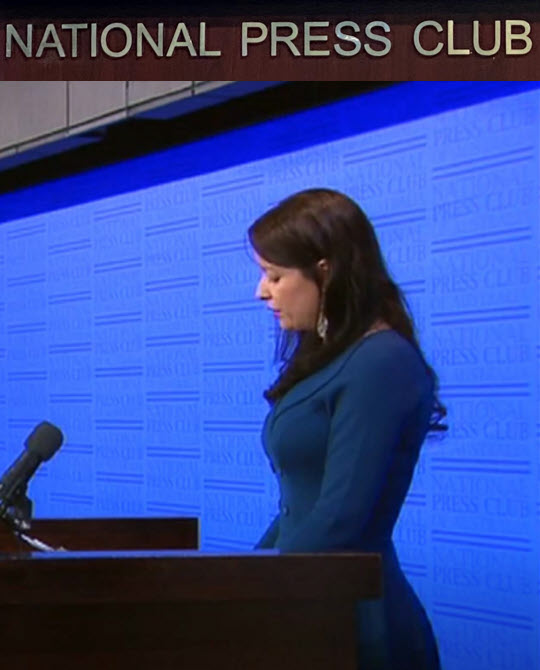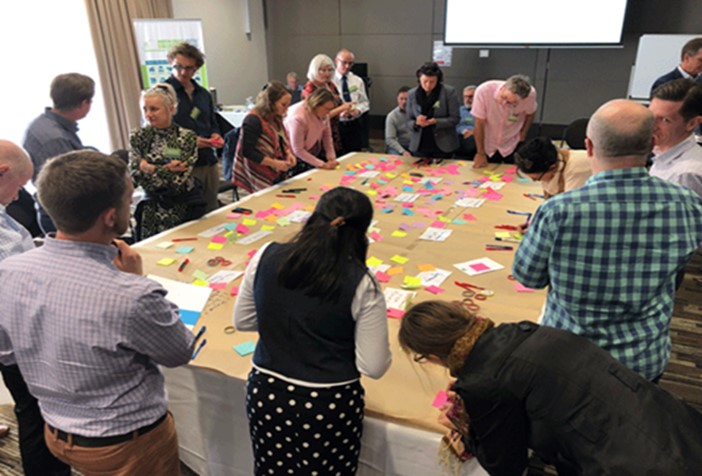Modeling Mental Health System Improvements Gets a Pandemic Lift
 Jo-An Occhipinti
Jo-An Occhipinti
Modeling and simulation have played important roles in understanding and explaining
the physical health implications of COVID-19. Their insights are helping public health
officials around the world project infection rates and understand the impact of
interventions like masking, social distancing, and vaccinations. But what about
the mental health impacts of COVID-19? How has the pandemic exacerbated mental
illness risk factors? What actions can federal and local governments take to
increase their communities' mental health?
“The Covid-19 pandemic has been a watershed moment for systems modelling in mental
health,” says Jo-An Occhipinti, Associate Professor, Head of the Systems Modelling,
Simulation, and Data Science department, and co-Director of the Mental Wealth
Initiative at the Brain and Mind Centre at the University of Sydney. “Where there
had been pushback from mental health epidemiologists who are more comfortable
with traditional statistical methods, there is now a new level of systems
modelling literacy. Models can drive a complex change process. They allow
people with different agendas to learn together, which is an effective way
of catalyzing coordinated action to improve community mental health outcomes.”
Along with her peers at the Brain and Mind Centre, A/Professor Occhipinti is working
with Primary Health Networks (PHNs) across Australia to grapple with pandemic-related
increases in mental illness and suicide risk, mental health service demand, substance
use, and homelessness. In place of traditional statistical analyses that examine risk
factors in historical data, models and simulation are helping regional stakeholders
to bring together best available research evidence, expert knowledge, and data to
understand the future trajectory of population mental health outcomes and evaluate
interventions.
“While understanding individual risk factors is important, to make robust forward
projections we need to understand the complex ways they interact, that’s where
systems modelling plays an important role,” says A/Professor Occhipinti. Decades
of research have identified individual, familial, social, economic, and environmental
risk factors that represent possible targets for intervention, but, in the past, this
has often resulted in action plans that include laundry lists of unrelated interventions
that has made evaluation and accountability difficult.
To address these issues, the Brain and Mind Centre builds models of national, state,
and regional mental health systems to find effective ways to reduce negative outcomes.
“We use Stella® Architect to build models that not only capture the dynamics of the
mental health system and its ability to respond to increases in demand, as seen during
the pandemic, but also to understand how policies and initiatives to improve education
and training and reduce unemployment, homelessness, and other social issues can impact
mental health outcomes,” says A/Professor Occhipinti. With help from her and her
colleagues, PHNs use Stella® Architect to use models customized for their regions to
run simulations, and identify, explain, and evaluate intervention strategies.
“Stella Architect is the best invention!” says A/Professor Occhipinti. “You don’t have
to be a software engineer to develop the model interfaces. It’s really easy for teams
to build flexible interfaces that support on-going, inclusive use of models.”
When the pandemic hit, existing systems models were rapidly refined and deployed.
PHNs could test which initiatives would mitigate the social and economic impacts
of the pandemic on population mental health and decide what to fund, implement,
and measure.
“Our models expose where the smart investments lie, which is so important for
knowing how best to allocate limited federal and state funding,” says A/Professor
Occhipinti. “Participatory approaches to systems modelling and simulation aided
by Stella Architect also help us bring people on the journey of learning with
us. It has helped us demonstrate important lessons like ‘more is not necessarily
better,’ that sometimes a small set of interventions that work well together
and are delivered at the right scale can be more effective than investing in
too broad a range of programs and initiatives. Also, participatory systems
modelling has helped stakeholders understand that sometimes, the most
effective population mental health strategies lie outside of the health sector.”
 A participatory modeling session
A participatory modeling session
For example, the Job Keeper program, implemented during the pandemic when
unemployment rose significantly, kept workers connected to their workplaces
and prevented further unemployment and the social dislocation that comes
with it. Other programs aimed at increasing female employment and providing
adequate childcare were projected to deliver good impacts in reducing mental
health related emergency department presentations and self-harm hospitalizations
in Australia.
PHNs have also learned that the timing of intervention implementation is critical.
“We know that early intervention is key to reducing suicide rates,” says A/Professor
Occhipinti. “There is good evidence that training general practitioners to recognize
the signs of suicide ideation and refer to appropriate services as well as mental
health education programs are effective in improving early care seeking. However,
model projections have helped PHNs see that when these interventions are introduced
in a region whose mental health system is already stretched, there are unintended
consequences. As a result of increased waiting lists for specialist mental health
services, people disengage from the system, and mental health outcomes get worse.
PHNs have to address system constraints and capacity before other interventions
can be effective.”
The economics of implementing interventions also impact the decisions made. The
Brain and Mind Centre systems models include costs so that PHNs can apply different
economic perspectives across alternative time horizons to understand the
cost-effectiveness or cost-benefit associated with alternative strategies
for funding allocation. “The flexibility afforded by the model interface
allows us to provide the economic outputs with a level of transparency,
highlighting for each intervention simulation who pays and who benefits,”
says A/Professor Occhipinti. “For example, a program might be funded by
the federal government, but state governments save money when hospitalizations
are avoided. This often leads to fascinating discussions including where
funding lobbying should be applied.”
The ability to create customizable user interfaces has kept Stella Architect
front and center in the Brain and Mind Centre’s work. “How a model interface
looks, and its usability, can really flavor the user’s perception of its
value,” says A/Professor Occhipinti. “When end users are empowered to change
its design, its functionality, and the language it uses, users make the model
their own, which aids in sustainable use of the decision support tool. One
PHN easily changed their model interface to reflect new branding which kept
Stella Architect and the model out in the open.”
In October 2021, the research team at the Brain and Mind Centre published
Beyond tinkering with the status quo: Coordinated structural reforms can
deliver a substantive improvement in mental health outcomes. The report
describes the group’s use of systems modeling to understand the likely
impacts of key mental health system and service reforms. Specifically,
the model points to technology-assisted care coordination between
multiple service providers, a substantial increase in specialist
mental health service capacity (psychiatrists, psychiatric nurses,
occupational therapists, social workers, etc.), and enhanced direct
access to care that eliminates wait times between system entry points
and specialist care.
Importantly, the systems modeling supporting the report demonstrated that any
of these three key elements on their own does not achieve a significant impact,
and some may make the situation worse. However, when implemented in combination,
modeled reforms were projected to deliver synergistic effects. The findings of
the Brain and Mind Centre’s systems modeling program point to the importance
of systems modeling beyond infectious disease control, to inform the design
and strengthening of mental health and social systems and the allocation of
limited resources to deliver better outcomes.
Capacity building is also an important next step for the field of system dynamics.
As Managing Director of Computer Simulation and Advanced Research Technologies
(CSART), an international alliance working to build global capacity in modeling
and simulation to support health and social policy and planning decisions,
A/Professor Occhipinti is leading efforts to share work across national boundaries.
“Substantial technological and methodological advancements are being made by
centres of excellence in health-focused systems modelling around the world,
which are improving the accessibility, transparency, and robustness of these
modelling tools,” says A/Professor Occhipinti. “It’s so important that we share
these advances and put sophisticated decision support tools in the hands of
decision makers so they can deliver more effective public policy and health
systems and make direct and profound impacts on people’s lives.”
“Systems modelling remains a rare skill set in health, so we are also very keen
to build much needed capacity to do this important work. Now that the pandemic
has shown the benefits of models, we don’t want to fall back into old ways.”